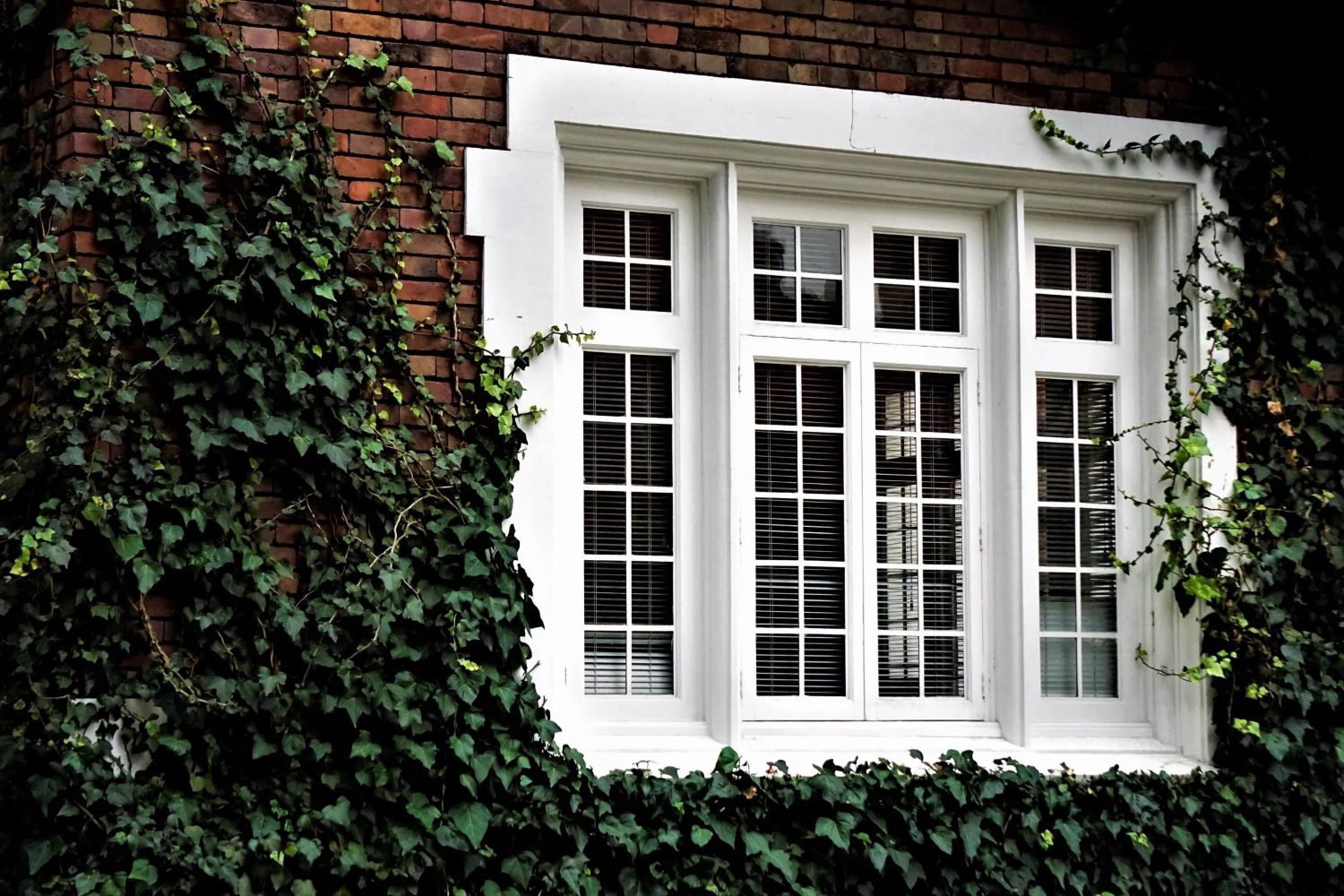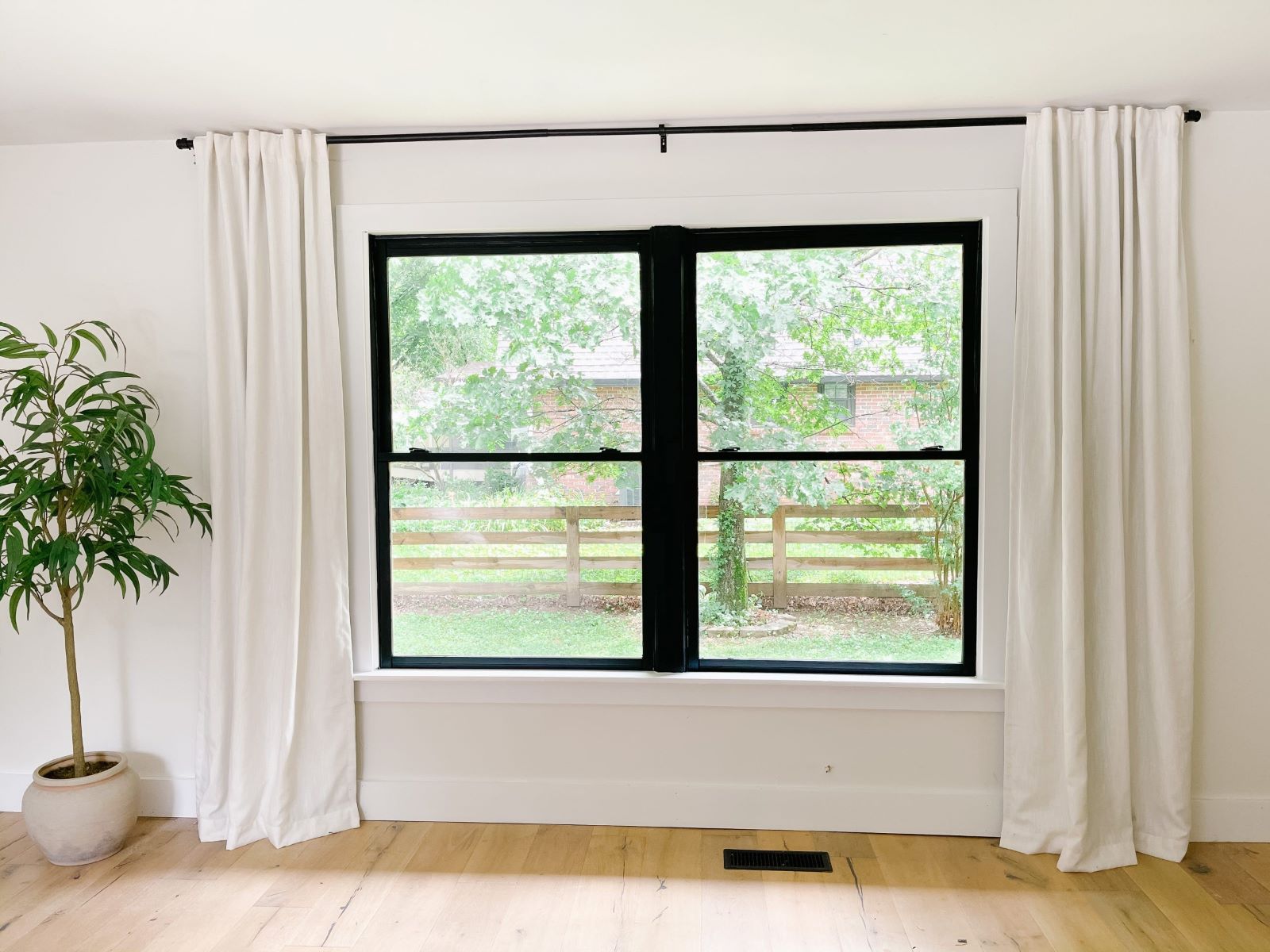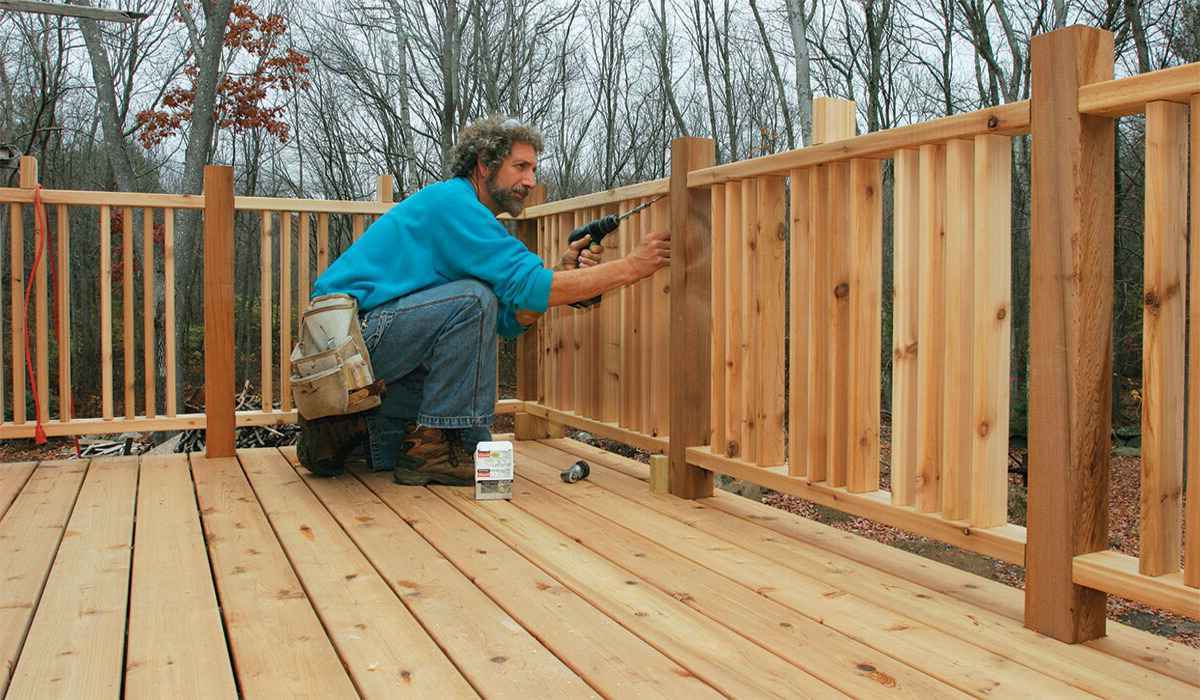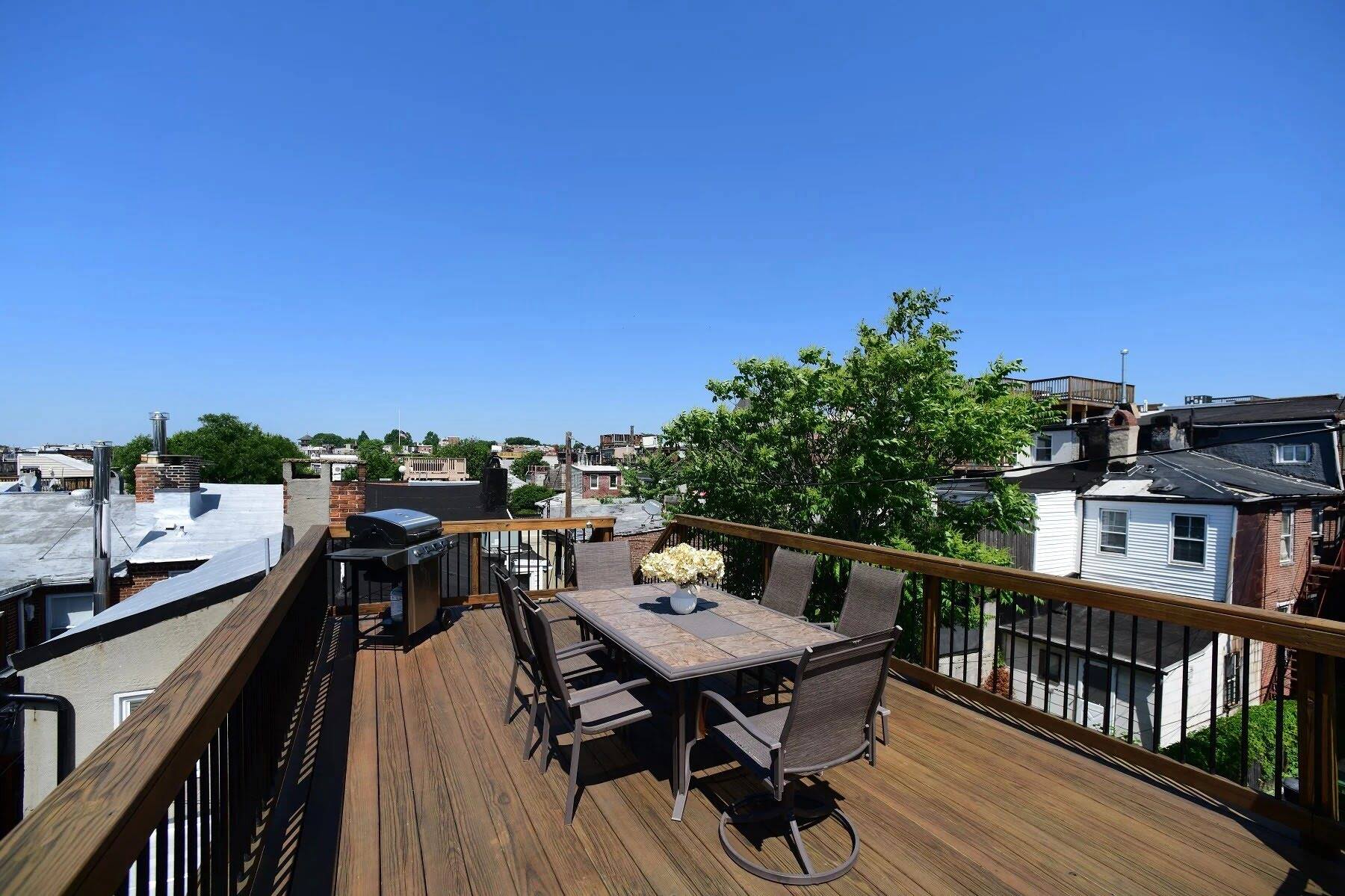Home>Create & Decorate>DIY & Crafts>Deck Building 101: How To Build A Deck From Scratch
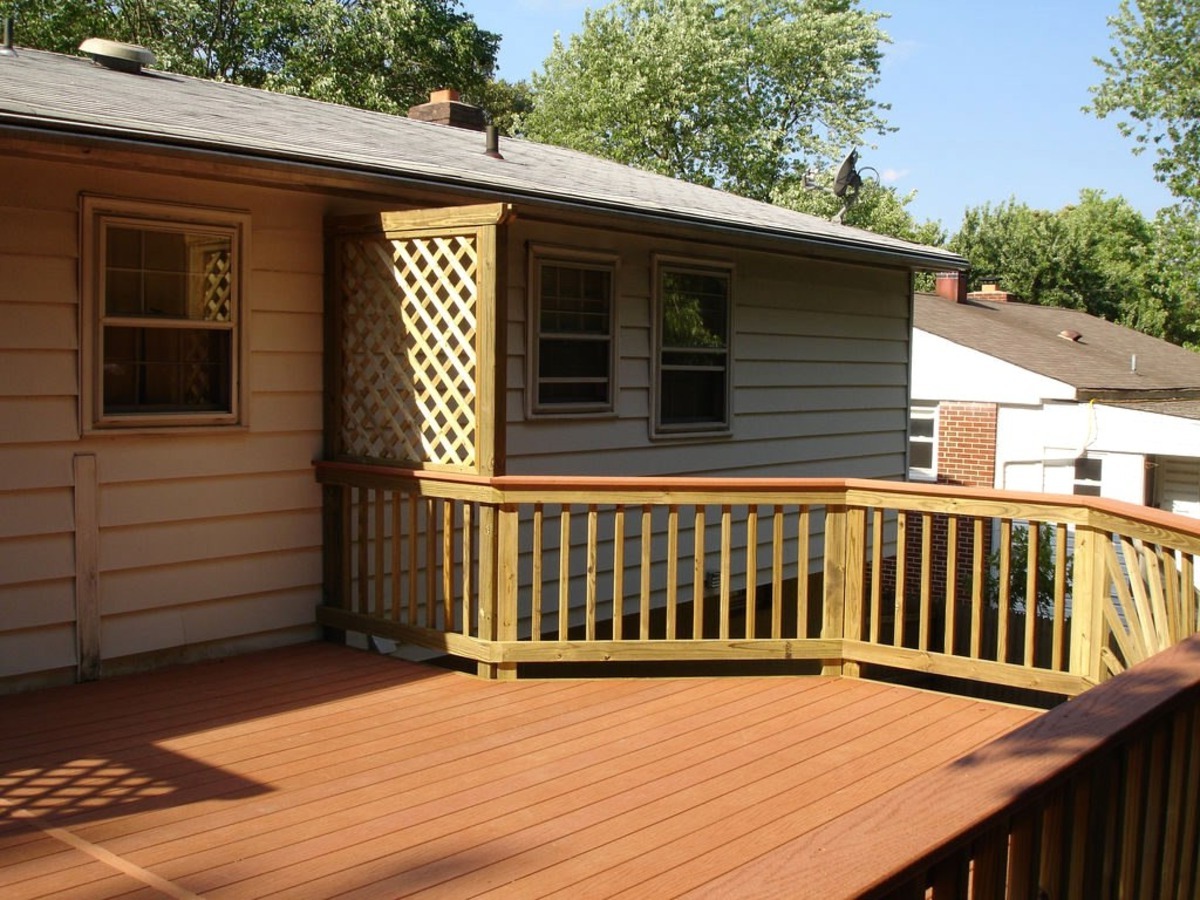

DIY & Crafts
Deck Building 101: How To Build A Deck From Scratch
Published: February 22, 2024

Content Creator specializing in woodworking and interior transformations. Caegan's guides motivate readers to undertake their own projects, while his custom furniture adds a personal touch.
Learn the basics of DIY deck building from scratch with our comprehensive guide. Get expert tips and ideas for creating the perfect outdoor space. Ideal for DIY & Crafts enthusiasts.
(Many of the links in this article redirect to a specific reviewed product. Your purchase of these products through affiliate links helps to generate commission for Twigandthistle.com, at no extra cost. Learn more)
Introduction
Building a deck from scratch is an exciting and rewarding project that can transform your outdoor space into a functional and inviting area for relaxation, entertainment, and enjoyment of nature. Whether you're a seasoned DIY enthusiast or a novice looking to take on a new challenge, constructing a deck can be a fulfilling endeavor that adds value to your home and enhances your lifestyle.
A well-designed deck provides a versatile extension of your living space, offering a perfect spot for hosting gatherings, savoring a morning cup of coffee, or simply unwinding after a long day. By creating a seamless transition between your indoor and outdoor environments, a thoughtfully crafted deck can elevate the overall aesthetic appeal of your property while serving as a hub for leisure and social activities.
Before embarking on this endeavor, it's essential to approach the project with careful planning and a clear vision of your desired outcome. From selecting the ideal location for your deck to choosing the right materials and adhering to local building codes, each step in the process requires thoughtful consideration and attention to detail.
In this comprehensive guide, we will walk you through the essential steps of building a deck, providing valuable insights, practical tips, and expert advice to help you navigate the journey with confidence. Whether you're envisioning a cozy platform for intimate gatherings or a sprawling outdoor oasis for entertaining guests, this guide will equip you with the knowledge and inspiration needed to bring your dream deck to life.
So, roll up your sleeves, gather your tools, and let's embark on this fulfilling adventure of creating a custom deck that reflects your personal style and enhances your outdoor living experience. With the right guidance and a can-do attitude, you'll soon be basking in the satisfaction of having built a stunning and functional deck that enriches your home and lifestyle.
Step 1: Planning and Designing Your Deck
Planning and designing your deck is the crucial first step in creating a space that seamlessly integrates with your home and meets your specific needs. This phase sets the foundation for a successful deck-building project and involves careful consideration of various factors to ensure that the end result aligns with your vision.
Assess Your Needs and Goals
Begin by envisioning how you intend to use your deck. Are you looking to create an outdoor dining area, a cozy nook for relaxation, or a multifunctional space for entertaining guests? Understanding your primary objectives will guide the design process and help determine the size, layout, and features of your deck.
Choose the Ideal Location
Selecting the right location for your deck is pivotal. Consider factors such as sunlight exposure, privacy, accessibility from the house, and the surrounding landscape. Whether you prefer a secluded retreat nestled among trees or a sun-drenched platform for soaking up rays, the location will significantly impact the ambiance and usability of your outdoor space.
Design the Layout
Sketch out a rough layout of your deck, taking into account any existing architectural features, such as doors, windows, and landscaping elements. Explore various shapes and configurations to find a design that harmonizes with your home's aesthetic and maximizes functionality. Incorporating designated areas for seating, cooking, or potted plants can help tailor the layout to your lifestyle.
Select Materials and Finishes
Research different decking materials, such as wood, composite, or PVC, and consider their durability, maintenance requirements, and visual appeal. Additionally, explore railing options, lighting fixtures, and decorative elements that complement your design concept. Choosing high-quality materials that withstand the elements ensures a long-lasting and visually appealing deck.
Consider Local Building Codes
Before finalizing your deck design, familiarize yourself with local building codes and regulations. These guidelines may dictate aspects such as structural requirements, railing height, and permit procedures. Adhering to these standards is essential for ensuring the safety and legality of your project.
Seek Inspiration
Gather inspiration from home improvement magazines, online platforms, and neighboring properties to spark creativity and refine your design ideas. Pay attention to details such as color schemes, furniture arrangements, and landscaping integration to envision a cohesive and inviting outdoor space.
By dedicating ample time to the planning and design phase, you lay the groundwork for a well-executed deck construction project that fulfills your aspirations and enhances your home's allure. With a clear vision and a thoughtful approach, you'll be well-prepared to move on to the next steps of bringing your dream deck to fruition.
Step 2: Obtaining Necessary Permits and Materials
Before diving into the physical construction of your deck, it's imperative to address the administrative and logistical aspects of the project. This involves securing the required permits and gathering the essential materials to ensure a smooth and compliant build.
Read more: How to Build a DIY Greenhouse Roof
Acquiring Permits
Navigating the regulatory landscape is a crucial preliminary step in deck construction. Most localities mandate obtaining permits for building a deck, as it involves structural modifications to your property. Contact your local building department to inquire about the specific permits and approvals needed for your project. The application process typically involves submitting detailed plans, paying applicable fees, and adhering to zoning regulations and building codes. While the permit acquisition process may seem bureaucratic, it is designed to uphold safety standards and ensure that your deck complies with structural and environmental requirements.
Procuring Materials
Once the paperwork is in order, it's time to gather the necessary materials for your deck. The choice of materials, such as lumber, fasteners, concrete, and decking boards, depends on your design preferences, budget, and environmental considerations. When selecting lumber, factors such as durability, resistance to decay, and maintenance requirements should be taken into account. Additionally, explore eco-friendly options and consider the long-term sustainability of the materials you choose. It's advisable to procure a comprehensive list of materials based on your deck design and ensure that they are of high quality to guarantee the longevity and structural integrity of your deck.
Seeking Professional Assistance
If you're uncertain about the permit application process or the selection of materials, consider consulting with a local contractor or a knowledgeable professional. Their expertise can provide valuable insights and guidance, ensuring that you navigate the administrative procedures and material selection with confidence. Moreover, seeking professional advice can help you make informed decisions that align with your vision and budget, ultimately contributing to the success of your deck-building endeavor.
By diligently addressing the administrative requirements and meticulously sourcing the essential materials, you set the stage for a well-prepared and compliant deck construction project. With the necessary permits in hand and a carefully curated selection of materials, you're poised to move forward with the physical realization of your envisioned outdoor retreat.
Step 3: Preparing the Site for Construction
Preparing the site for deck construction is a pivotal phase that sets the groundwork for a sturdy and enduring outdoor structure. This step involves a series of essential tasks aimed at ensuring the stability, safety, and longevity of your deck. By meticulously attending to site preparation, you lay the foundation for a seamless and successful construction process.
Read more: How to Build a DIY Camper Roof
Clearing and Leveling the Ground
The first task in site preparation is to clear the designated area of any obstructions, debris, or vegetation. This involves removing rocks, roots, and any existing structures that may impede the construction process. Additionally, it's crucial to assess the natural slope of the terrain and ensure that the ground is adequately leveled to accommodate the deck's foundation. Using a transit level or a laser level can aid in determining the precise elevation and identifying any areas that require grading or excavation.
Marking the Layout
Once the ground is cleared and leveled, marking the layout of the deck provides a visual guide for the construction process. Using stakes and string, outline the perimeter of the deck according to the predetermined dimensions and design. This step allows you to visualize the spatial footprint of the deck and make any necessary adjustments before proceeding to the next stages of construction.
Excavation and Footing Installation
Excavating the soil to install footings is a critical aspect of site preparation. The depth and diameter of the footings depend on the local building codes and the anticipated load-bearing capacity of the deck. Carefully dig the holes for the footings, ensuring that they are uniform in size and depth. Subsequently, place and align the footing forms within the excavated holes, readying them for the subsequent concrete pouring process. Properly installed footings provide the structural support necessary to anchor the deck securely to the ground.
Addressing Drainage and Moisture Control
Considering drainage and moisture control is essential for preserving the integrity of your deck. Implementing measures to mitigate water accumulation and moisture retention beneath the deck surface is crucial for preventing rot, decay, and structural damage over time. This may involve incorporating a gravel bed or a drainage system beneath the deck to facilitate water runoff and ventilation, safeguarding the underlying structure from moisture-related issues.
Read more: How to Build a DIY Sprinter Roof Rack
Verifying Compliance with Regulations
Throughout the site preparation process, it's imperative to ensure compliance with local building codes and regulations. This includes adhering to setback requirements, property line clearances, and any specific guidelines pertaining to deck construction in your area. By verifying compliance at each stage of site preparation, you mitigate the risk of encountering regulatory obstacles during or after the construction phase.
By meticulously executing the site preparation tasks, you establish a solid groundwork for the subsequent phases of deck construction. With the site cleared, leveled, and primed for structural integrity, you are well-positioned to progress to the next steps of building the frame and support structure, bringing you closer to the realization of your envisioned outdoor haven.
Step 4: Building the Frame and Support Structure
With the site meticulously prepared, the focus now shifts to constructing the frame and support structure, laying the groundwork for the deck's stability and resilience. This phase involves precision and attention to detail to ensure that the framework is robust, level, and capable of withstanding the intended load.
Setting the Ledger Board
The first step in building the frame is affixing the ledger board to the exterior wall of the house. This horizontal component provides crucial support for one side of the deck and serves as the anchor point for the entire structure. It is imperative to securely attach the ledger board to the house using lag screws or through-bolts, ensuring that it is level and properly flashed to prevent water intrusion.
Installing Beams and Joists
Once the ledger board is in place, the installation of beams and joists follows. Beams, typically constructed from sturdy lumber, run perpendicular to the ledger board and provide essential support for the joists. Joists, in turn, are secured to the beams, forming the framework on which the decking boards will be laid. Careful attention to spacing, alignment, and fastening is crucial to ensure structural integrity and load-bearing capacity.
Read more: How to Build a DIY Garage Door
Incorporating Posts and Footings
Support posts are strategically positioned to bolster the deck's framework, providing additional reinforcement and stability. These posts are anchored to concrete footings, which have been previously installed during the site preparation phase. Ensuring that the posts are plumb and securely fastened to the beams is essential for maintaining the structural integrity of the deck.
Bracing and Cross-Bracing
To further fortify the frame and minimize lateral movement, bracing and cross-bracing are implemented. These components help distribute the load evenly and prevent swaying or shifting of the deck structure. By strategically placing braces and cross-braces, the overall stability and rigidity of the frame are enhanced, contributing to a durable and secure deck.
Verifying Alignment and Leveling
Throughout the construction of the frame and support structure, meticulous attention is given to verifying alignment and leveling. Utilizing a level and string lines, each component is meticulously adjusted to ensure that the frame is uniformly aligned and free of any irregularities. This meticulous approach is essential for laying a solid foundation for the subsequent installation of decking boards and railing systems.
By methodically executing the construction of the frame and support structure, you establish a sturdy and reliable foundation for the deck, setting the stage for the exciting phases of installing decking boards, adding railing and stairs, and applying finishing touches. With the frame in place, the vision of your dream deck is steadily materializing, bringing you closer to the realization of your outdoor oasis.
Step 5: Installing Decking Boards
The installation of decking boards marks a pivotal phase in the construction of your deck, as it brings forth the tangible realization of your envisioned outdoor space. This step involves meticulous precision and attention to detail to ensure that the decking boards are seamlessly laid, creating a visually appealing and structurally sound surface for your deck.
Read more: How to Build a DIY Camper Door
Selecting the Right Boards
Before commencing the installation, it is crucial to select high-quality decking boards that align with your design preferences and functional requirements. Consider factors such as material durability, resistance to weathering, and aesthetic appeal. Whether you opt for natural wood, composite, or PVC boards, prioritize longevity and visual appeal to ensure a lasting and visually appealing deck surface.
Planning the Layout
Careful planning of the decking board layout is essential to achieve a cohesive and visually pleasing result. Consider the orientation of the boards, the direction of the wood grain, and any pattern or design elements you wish to incorporate. Additionally, accounting for expansion gaps between the boards is vital to accommodate natural wood movement and ensure proper drainage.
Securing the Boards
With the layout planned, the process of securing the decking boards begins. Utilizing corrosion-resistant screws or hidden fastening systems, the boards are meticulously affixed to the joists, ensuring uniform spacing and alignment. Attention to detail is paramount, as the consistent placement and secure fastening of the boards contribute to the overall structural integrity and aesthetic appeal of the deck surface.
Incorporating Finishing Details
As the decking boards are installed, attention is given to finishing details that enhance the visual allure and safety of the deck. This may involve beveling the board edges, concealing fastener heads, and addressing any exposed cut ends to create a polished and professional appearance. Additionally, integrating decorative elements, such as inlays or contrasting board patterns, can infuse character and charm into the deck surface.
Ensuring Structural Integrity
Throughout the installation process, verifying the structural integrity of the decking boards is paramount. This involves confirming that the boards are uniformly leveled, securely fastened, and free of any warping or defects. Rigorous quality control measures ensure that the deck surface is not only visually appealing but also capable of withstanding the anticipated foot traffic and environmental conditions.
By meticulously executing the installation of decking boards, you bring your dream deck one step closer to fruition, creating a captivating and functional outdoor space that reflects your unique style and enhances your lifestyle. With the decking boards in place, the vision of your ideal deck is steadily materializing, setting the stage for the subsequent phases of adding railing and stairs, and applying the finishing touches that will transform your outdoor space into a cherished retreat.
Step 6: Adding Railing and Stairs
The addition of railing and stairs is a pivotal phase in the construction of your deck, as it not only enhances the safety and functionality of the space but also contributes to its aesthetic appeal. This step involves meticulous attention to detail and adherence to safety standards to ensure that the railing and stairs seamlessly integrate with the overall design while providing essential support and accessibility.
Designing the Railing System
Before commencing the installation of the railing, careful consideration is given to the design and material selection. The railing system should harmonize with the overall aesthetic of the deck while prioritizing safety and compliance with local building codes. Whether opting for traditional wooden balusters, sleek metal railings, or transparent glass panels, the design should align with your vision and lifestyle while ensuring the security of the deck environment.
Installing the Railing Components
The installation process begins with securing the posts that will support the railing system. These posts are strategically positioned and anchored to the underlying framework, providing the necessary structural support for the railing. Subsequently, the balusters or infill panels are meticulously installed, ensuring uniform spacing and secure fastening to create a visually appealing and secure barrier around the deck perimeter.
Read more: How to Build an Arch Door Frame
Incorporating Handrails and Top Caps
Handrails play a crucial role in providing stability and guidance along the deck perimeter, particularly in elevated or multifaceted deck designs. The installation of handrails involves meticulous alignment and secure attachment to the posts, prioritizing user safety and accessibility. Additionally, the integration of top caps or handrail covers not only enhances the visual appeal of the railing system but also provides a comfortable gripping surface for added safety and convenience.
Constructing Stair Systems
The construction of stairs is a fundamental aspect of deck functionality, facilitating seamless access between different levels and ensuring user safety. Careful attention is given to the design and dimensions of the stairs, ensuring that they conform to building codes and ergonomic standards. Stringers, treads, and risers are meticulously assembled and installed, prioritizing structural integrity and uniformity to create a safe and visually appealing stair system.
Verifying Compliance and Safety
Throughout the installation of railing and stairs, meticulous verification of compliance with safety standards and building codes is paramount. This involves confirming the appropriate height and spacing of balusters, the structural stability of the railing system, and the ergonomic design of the stairs. Rigorous adherence to safety guidelines ensures that the railing and stairs not only enhance the visual allure of the deck but also provide a secure and accessible environment for occupants and guests.
By methodically executing the installation of railing and stairs, you elevate the functionality and safety of your deck while adding a touch of elegance and sophistication to the outdoor space. With the railing and stairs in place, your dream deck is one step closer to becoming a versatile and inviting retreat that enriches your outdoor living experience.
Step 7: Applying Finishing Touches
The application of finishing touches is the culminating phase in the construction of your deck, where meticulous attention to detail and creative embellishments elevate the visual appeal and functionality of the outdoor space. This step involves integrating elements that enhance the ambiance, comfort, and aesthetic allure of the deck, transforming it into a captivating retreat that reflects your personal style and enhances your outdoor living experience.
Enhancing with Lighting
Incorporating lighting fixtures is a transformative element that extends the utility and allure of your deck into the evening hours. Whether opting for subtle recessed lights, elegant sconces, or enchanting string lights, strategically placed illumination creates an inviting atmosphere while enhancing safety and visibility. Additionally, accentuating architectural features or landscaping with well-placed lights adds a touch of drama and sophistication to the deck environment.
Introducing Greenery and Decor
The infusion of potted plants, vibrant flowers, and decorative elements infuses character and charm into the deck space. Consider integrating planter boxes, hanging baskets, or vertical gardens to introduce a refreshing burst of greenery. Furthermore, incorporating decorative accents such as outdoor rugs, throw pillows, and weather-resistant artwork adds personality and comfort, creating an inviting and personalized outdoor sanctuary.
Sealing and Staining
Applying a protective sealant or stain to the decking boards not only enhances their visual appeal but also safeguards them from the elements. Selecting a high-quality sealant or stain that complements the natural beauty of the wood or enhances the color of composite materials prolongs the lifespan of the deck surface while accentuating its inherent elegance. This essential step contributes to the long-term durability and aesthetic allure of your deck.
Personalizing with Furniture
Selecting outdoor furniture that aligns with your lifestyle and design vision transforms the deck into a functional and inviting living space. Whether creating a cozy seating area with comfortable lounge chairs, a dining nook with a stylish table and chairs, or a relaxation zone with hammocks and ottomans, the choice of furniture sets the tone for how the deck will be enjoyed and experienced.
Read more: How to Build DIY Camper Windows
Embracing Privacy and Shade
Incorporating privacy screens, pergolas, or retractable awnings provides shelter and seclusion, enhancing the comfort and versatility of the deck. These elements not only offer protection from the sun and wind but also create intimate alcoves for relaxation and contemplation, fostering a sense of tranquility and seclusion within the outdoor environment.
By thoughtfully integrating these finishing touches, you elevate your deck into a captivating and functional outdoor haven that reflects your unique style and enhances your lifestyle. Each element contributes to the creation of a personalized and inviting space, where you can savor moments of relaxation, entertain guests, and immerse yourself in the beauty of outdoor living.
Conclusion
As you reach the culmination of your deck-building journey, it's time to reflect on the remarkable transformation that has taken place. What was once a mere vision or a blueprint on paper has now materialized into a captivating outdoor sanctuary that enriches your home and lifestyle. The process of planning, obtaining permits, preparing the site, constructing the frame, installing decking boards, adding railing and stairs, and applying finishing touches has been a labor of love, culminating in the creation of a space that embodies your unique style and aspirations.
Your deck is more than just an extension of your home; it's a testament to your creativity, perseverance, and dedication to enhancing your living environment. It stands as a versatile platform for hosting joyful gatherings, savoring tranquil moments, and immersing yourself in the beauty of nature. The careful consideration given to every aspect of the construction process, from the selection of materials to the integration of personalized details, has resulted in a space that seamlessly integrates with your lifestyle and elevates the overall appeal of your property.
As you step onto your newly constructed deck, you are greeted by a symphony of elements that converge to create an inviting and functional outdoor retreat. The sturdy frame, meticulously installed decking boards, elegant railing system, and thoughtfully curated finishing touches coalesce to form a space that beckons you to unwind, entertain, and connect with the outdoors. The interplay of lighting, greenery, furniture, and privacy features creates an ambiance that is uniquely yours, inviting you to embrace the countless possibilities that your deck offers.
Beyond its aesthetic allure, your deck represents a canvas for cherished memories and meaningful experiences. It is a stage for laughter, conversations, and quiet contemplation. Whether basking in the warmth of the sun, enjoying a meal under the stars, or simply relishing the tranquility of the outdoors, your deck embodies the essence of leisure and hospitality. It is a space that adapts to your needs and desires, evolving with the changing seasons and becoming an integral part of your daily life.
As you stand on your deck, surrounded by the fruits of your labor, take a moment to savor the sense of accomplishment and pride that accompanies the completion of this transformative project. Your deck is not merely a structure; it is a reflection of your vision, creativity, and unwavering commitment to enhancing your living environment. It stands as a testament to the power of thoughtful design, meticulous craftsmanship, and the enduring rewards of bringing dreams to life.
With your deck as a testament to your ingenuity and determination, you are poised to embark on a journey filled with cherished moments, shared laughter, and the simple joys of outdoor living. As the seasons unfold and new memories are woven into the fabric of your deck, may it continue to serve as a source of inspiration, relaxation, and connection with the natural world. Your deck is not just a construction; it is a legacy of craftsmanship, creativity, and the enduring pursuit of a life well-lived.

